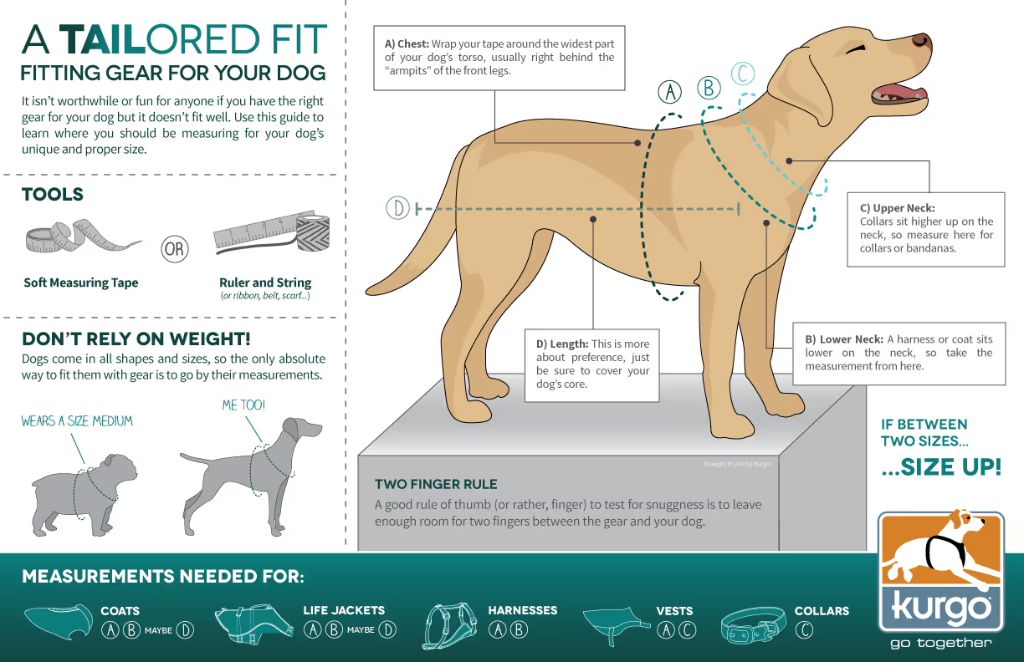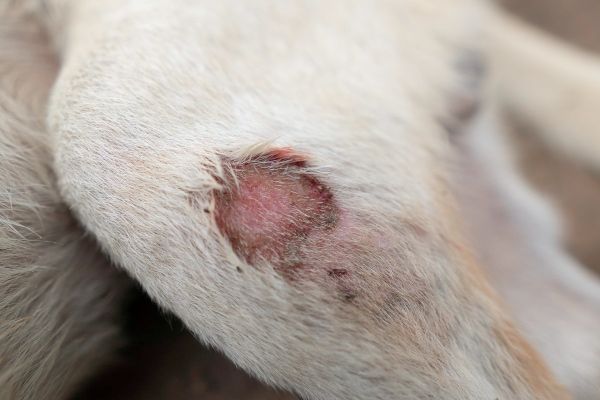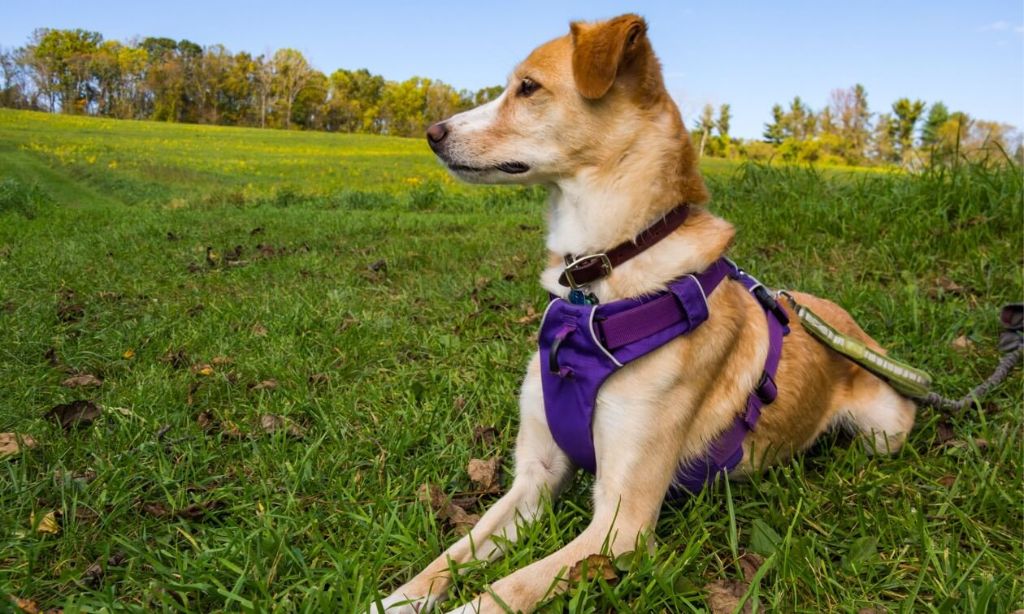Introduction
Can a dog harness cause harm to a dog? This is an important question for any dog owner using a harness. While harnesses are often touted as a safer option than collars for controlling and walking dogs, some evidence suggests they may potentially damage a dog if used improperly or for extended periods.
Harnesses have grown greatly in popularity in recent years as a more comfortable and less risky alternative to collars, which can damage a dog’s neck and trachea when pulling on leash. However, harnesses have potential downsides too. This article will examine if harnesses can injure dogs, look at how they may cause damage, and provide tips on safe harness use.
Proper Fit

A harness that fits properly is crucial for preventing injury. When fitting a dog for a harness, you’ll want to follow these guidelines:
The harness should fit snugly but not be uncomfortably tight. You should be able to fit two fingers between the harness straps and your dog’s body. Overly tight harnesses can chafe and rub, causing sores.
Pay attention to wear points behind the legs and under the arms where straps make contact. The harness should not dig in, pinch, or cause irritation at these spots.
Make sure the harness is sized appropriately for your dog’s chest girth and body shape. Trying different styles can help find the right fit.
Regularly check and adjust straps as your dog moves and grows. Growing puppies especially may need frequent harness adjustments.
A proper fitting harness should distribute pressure evenly and allow your dog to move comfortably without any pinching or restriction.
Pressure Sores

One of the most common issues caused by an ill-fitting dog harness is the development of pressure sores. These sore spots occur from the harness constantly rubbing against and irritating small areas of the dog’s skin. At first, the dog may just experience mild redness or hair loss around the areas where the harness makes contact. However, over time, these spots can develop into painful open sores if the irritation continues.
Pressure sores most often crop up along the dog’s chest, under their front legs, or on their belly where the harness straps rub. The severity depends on factors like the harness material, tightness of fit, activity level, and individual dog sensitivity. For example, a harness made with coarser nylon webbing is more likely to chafe than one lined with a softer padded mesh. The sores can range from mild to severe.
To prevent pressure sores, it’s critical to ensure the harness fits properly and does not dig into the dog’s skin. Look for any red marks after use and adjust straps as needed. Switching to a harness with wider straps or more padding can also help disperse pressure over a larger area. Also, giving the dog’s skin a break from the harness regularly will allow time to heal. Catching and correcting harness fit issues early is key to avoiding painful sores.
Neck and Spine Injury
A harness that does not fit properly or that your dog pulls against forcefully can potentially cause injury to their neck and spine. When a dog lunges forward or pulls on the leash, the harness places pressure on the neck and back. This repeated force over time can strain muscles and cause nerve damage in the neck and spine.
Dogs with short necks like pugs, bulldogs, and other brachycephalic breeds are especially prone to neck and spine injuries from harnesses. The short neck gives greater leverage for the harness to torque the neck. Using a no-pull harness and training loose leash walking are very important for these breeds.
Signs of neck or spine problems potentially caused by the harness include reluctance to move, yelping when handled, muscle spasms, and loss of coordination in the limbs. Seek veterinary care immediately if you notice any of these signs to prevent long-term damage.
Types of Harnesses

There are several types of dog harnesses that distribute pressure differently over a dog’s body.
Back-clip harnesses, as the name implies, attach the leash to a ring on the dog’s back. These are the most traditional type of harness and evenly distribute force across the chest and shoulders. While they avoid pressure on the neck, they don’t give much control over pulling.
Front-clip harnesses attach the leash to a ring on the dog’s chest. This design turns the dog toward the handler if they try to pull, making it easy to control and discourage pulling. However, they can put some pressure on the shoulders.
Dual-clip harnesses feature both a front and back clip, giving the versatility of both styles. However, the dual attachment points can make them more complicated to put on.
Head halters wrap around a dog’s snout and neck. They allow for maximum control over a dog’s head and minimal force on the body. But many dogs dislike having something on their face.
The right type of harness depends on the individual dog, their body shape, and leash walking needs. Consult with a trainer to determine what style may work best.
Mobility Issues
Some types of harnesses can exacerbate existing joint and mobility issues in dogs, especially as they age. The constant pulling and pressure from the harness straps can put additional strain on a dog’s joints, tendons, and ligaments. This is particularly problematic for large breed dogs prone to hip dysplasia, older dogs with arthritis, and any dog recovering from orthopedic surgery or injuries.
Harnesses that restrict a dog’s natural range of motion by crossing over the shoulders and chest can make it difficult and uncomfortable for dogs with these pre-existing conditions to walk comfortably. The dog may start to lag behind on walks, appear hesitant to move around, or vocalize pain responses when the harness is put on. Signs of lameness, stiffness, limping or dragging their paws may emerge or worsen over time.
Veterinarians advise avoiding harnesses that rub on arthritic joints or any bony protuberances that may become sore spots. Harnesses that only attach at two points, like the chest and back, allow for freer shoulder movement and may be preferable for dogs with mobility issues. Consult with your vet on the best harness type and fit for your dog’s individual orthopedic needs.
Behavior Issues
One of the biggest concerns with harnesses is that they can inadvertently encourage pulling and lunging behaviors in dogs. This is because most harnesses act by distributing pressure across the dog’s chest and shoulders. When a dog pulls forward in a harness, they feel resistance around their chest rather than on their neck. This can give the rewarding feeling of “pulling through” the pressure.
In contrast, traditional collars put pressure on a dog’s neck and trachea when pulling. This discomfort naturally discourages pulling without rewarding the dog. With a harness, many dogs will start habitually pulling simply because the harness makes it comfortable to do so.
Excessive pulling and lunging on walks is problematic for several reasons. It makes walks unpleasant and difficult for the owner. It also means the dog is not learning to walk properly on a loose leash. Additionally, pulling can potentially lead to other behavioral issues stemming from barrier frustration and overexcitement.
That said, well-fitted front attachment harnesses can help reduce pulling by making it physically more difficult for the dog. But ultimately, proper leash training is required to fully address the root behavior. Harnesses should never be used as an excuse to allow excessive pulling.
Long-Term Use

Using a harness daily for years can potentially cause some issues for dogs. The constant pressure and rubbing against the body from the harness straps may lead to irritation, sores, or hair loss if the dog has sensitive skin or allergies. Dogs with thicker coats may be more protected. However, the harness puts pressure on the chest and can restrict shoulder, leg, and body movement if sized too tightly. This could gradually cause muscle atrophy and arthritis over time.
Some dogs may also learn to pull excessively on the harness over many years, leading to potential neck, spine, and joint injuries. They may develop bad habits and become reliant on pulling against the harness for directional cues. Additionally, dogs walked primarily on a harness can become less responsive to a loose leash, verbal cues, and training, since they are used to the physical pressure from the harness guiding them.
To prevent issues, it’s important to monitor the fit of the harness as your dog ages and make adjustments as needed. Giving your dog rest days from the harness, alternating with a plain collar, can also help minimize irritation. And continuing regular leash training will help maintain good behavior despite long-term harness use.
Prevention
There are several things dog owners can do to prevent harness damage:
Proper fitting – Make sure to measure your dog and buy a harness that fits correctly. It should be snug but not overly tight. You should be able to fit two fingers between the harness and your dog’s body.
Monitoring – Check the fit regularly as your dog grows and gains/loses weight. Look for signs of chafing or sores where the harness makes contact. Adjust straps as needed.
Alternating harnesses – Use different styles of harnesses and change them out regularly. This helps prevent excessive pressure from being repeatedly applied to the same spots.
Prevention is key to avoiding both short and long term damage from ill-fitting harnesses. Take the time to find the right harness for your dog’s size and shape. Monitor for proper fit and make adjustments. Alternate styles to change pressure points. With some care and vigilance, you can keep your dog safe, comfortable and injury-free!
Conclusion
In summary, harnesses can damage dogs if not used properly. The main risks include pressure sores, neck and spine injuries, mobility issues, and behavior problems. To prevent damage, choose an appropriately fitted harness suited for your dog’s body type. Avoid leaving harnesses on for extended periods, and watch for signs of discomfort like whining or refusal to move. With proper harness selection, fit, and limited use, harnesses should not pose long-term risks. The key takeaways are to frequently check your dog’s neck and shoulder areas for irritation, choose lightweight padding for comfort, and discontinue use if any concerning symptoms arise.
